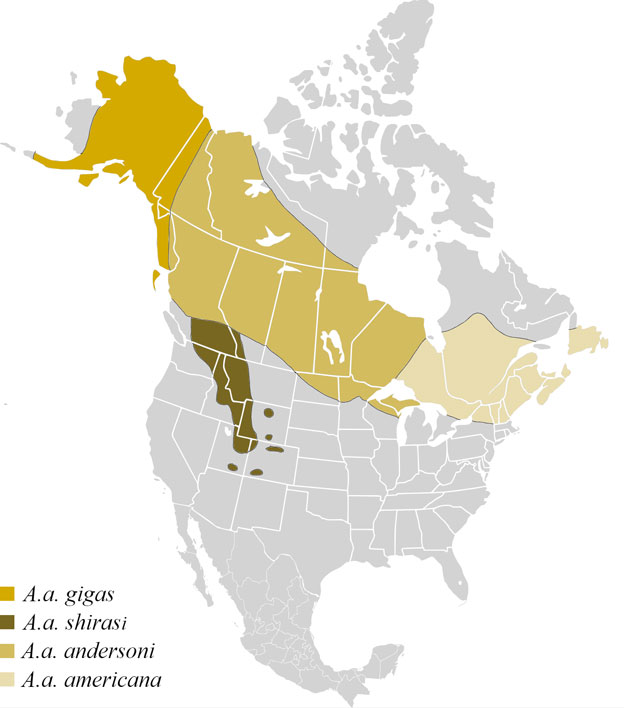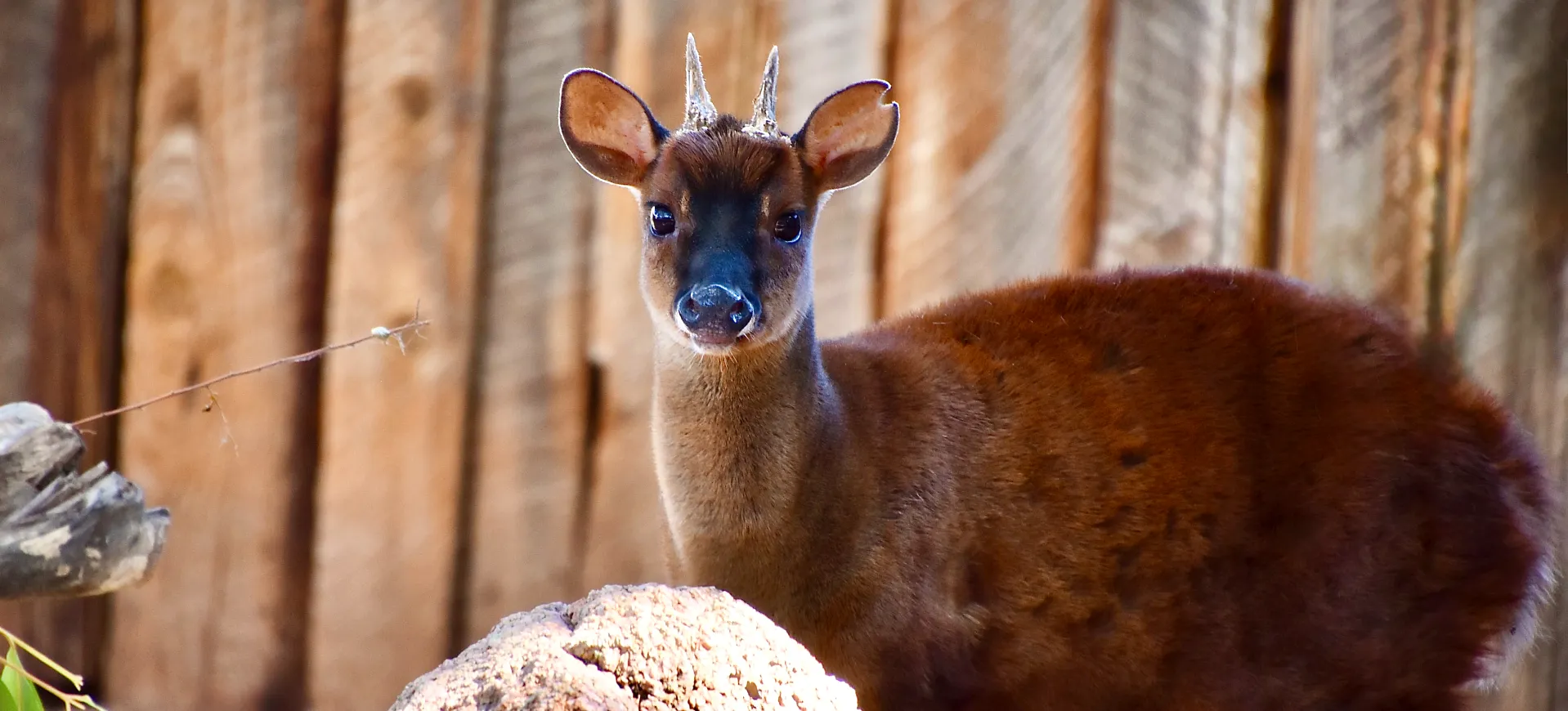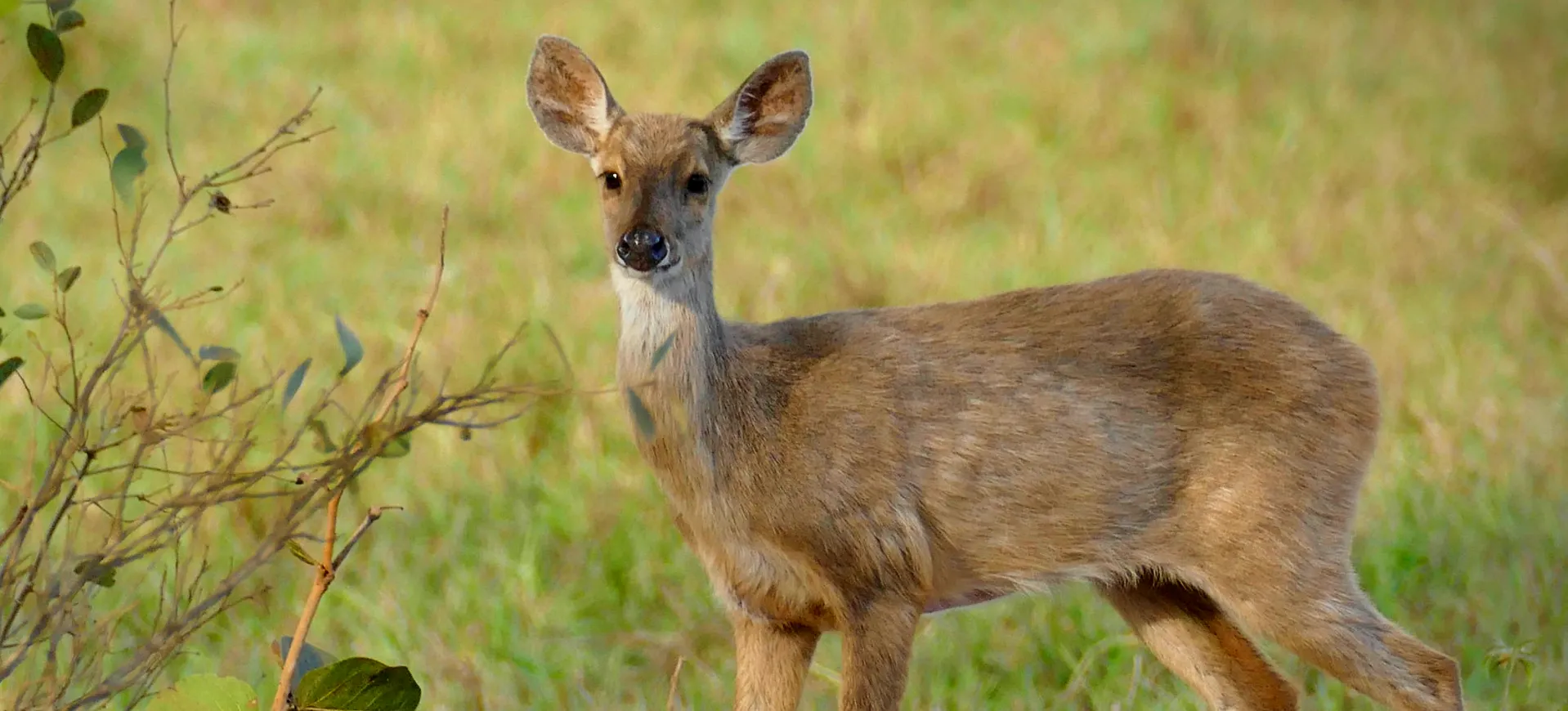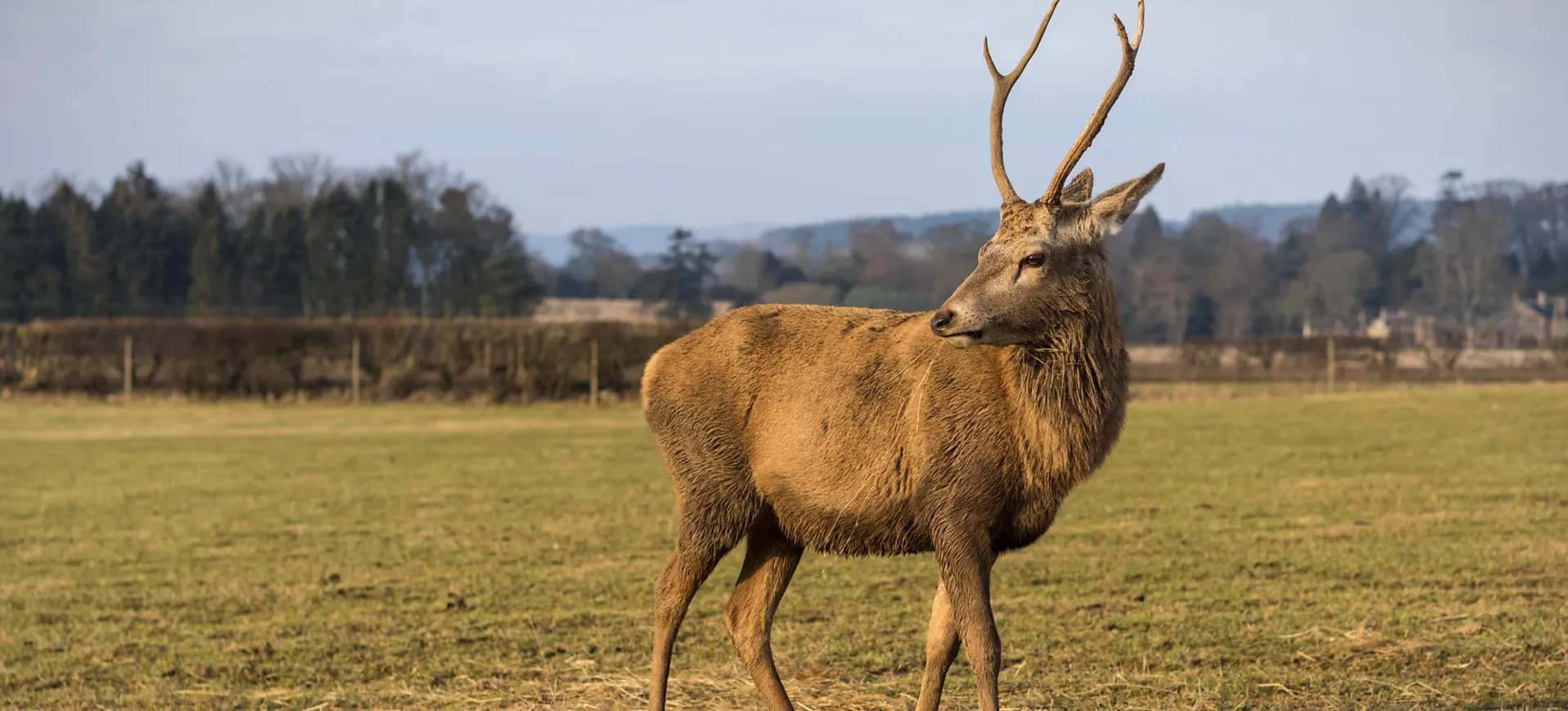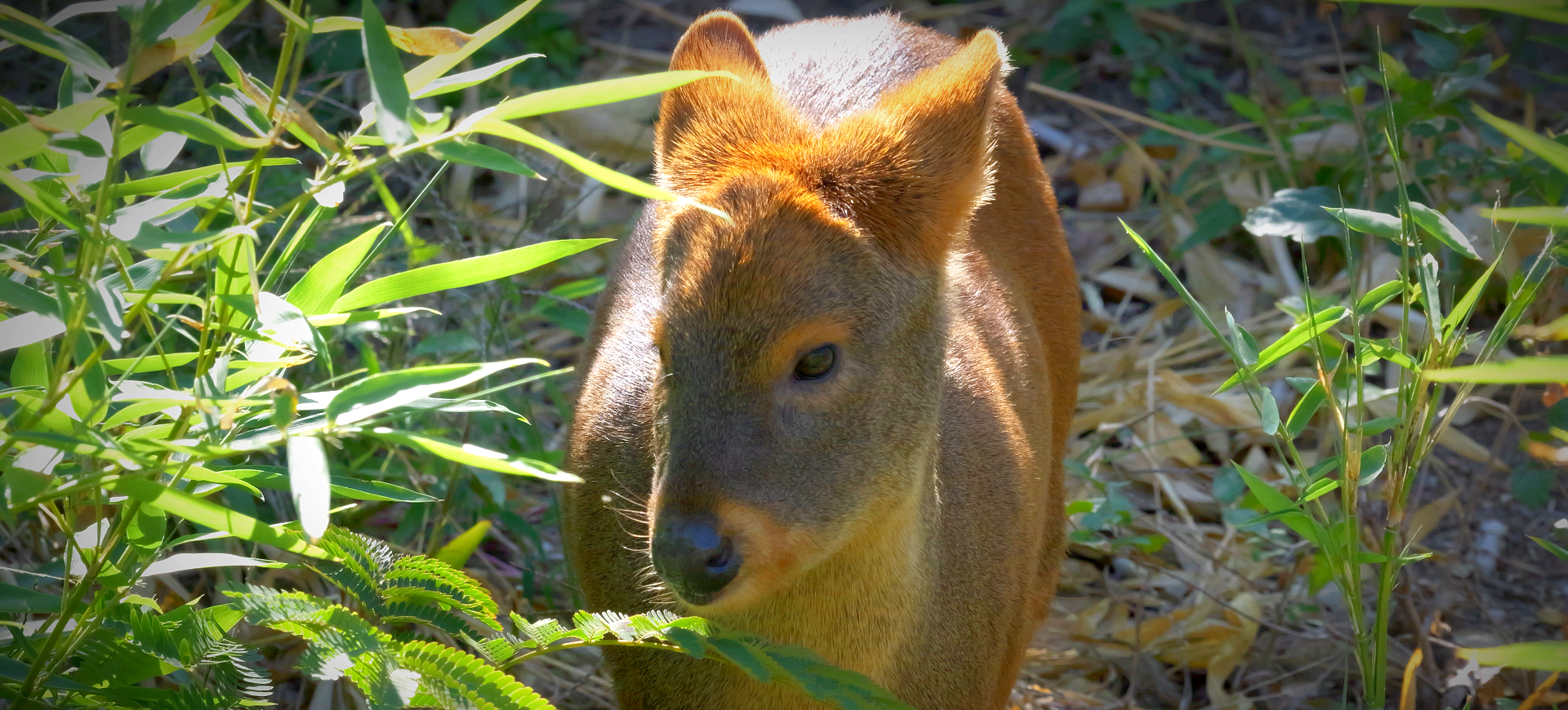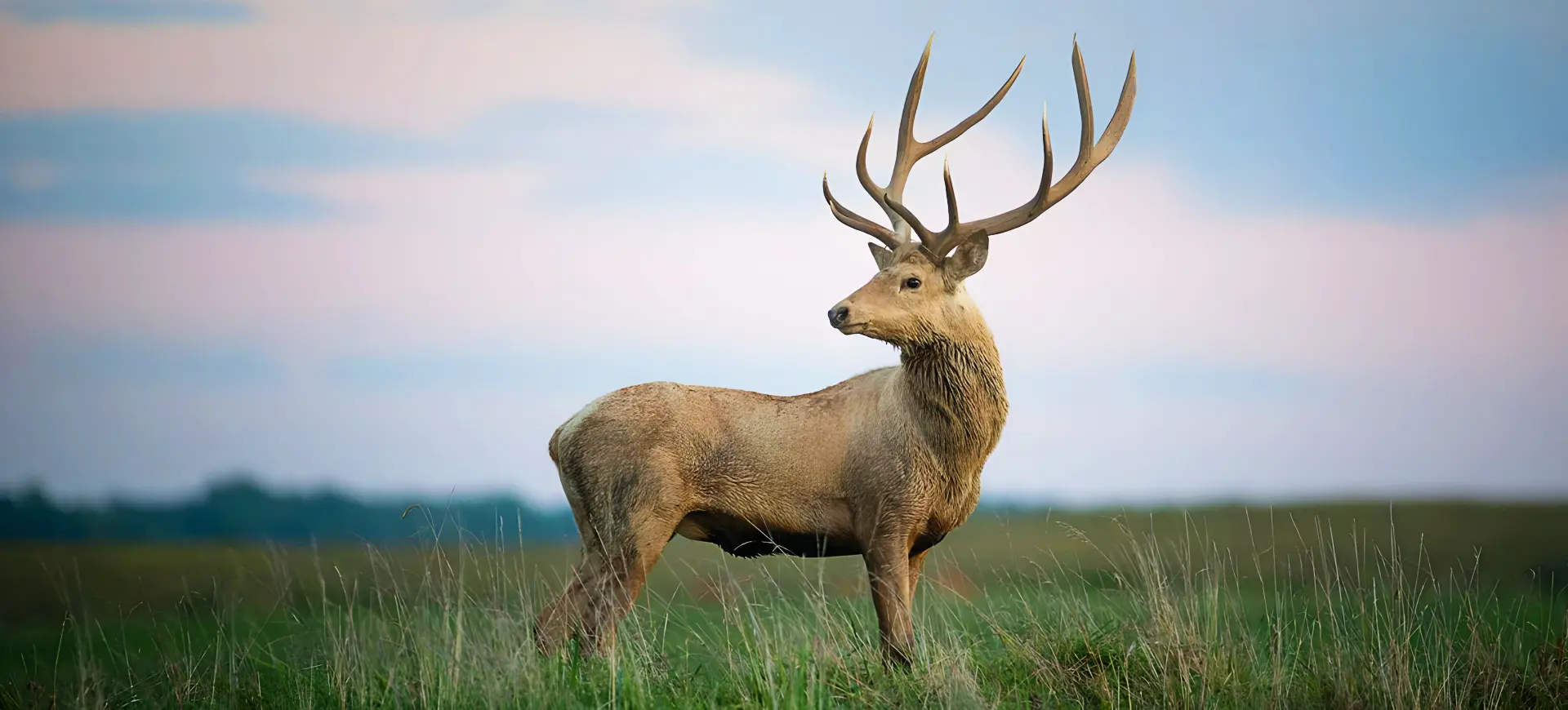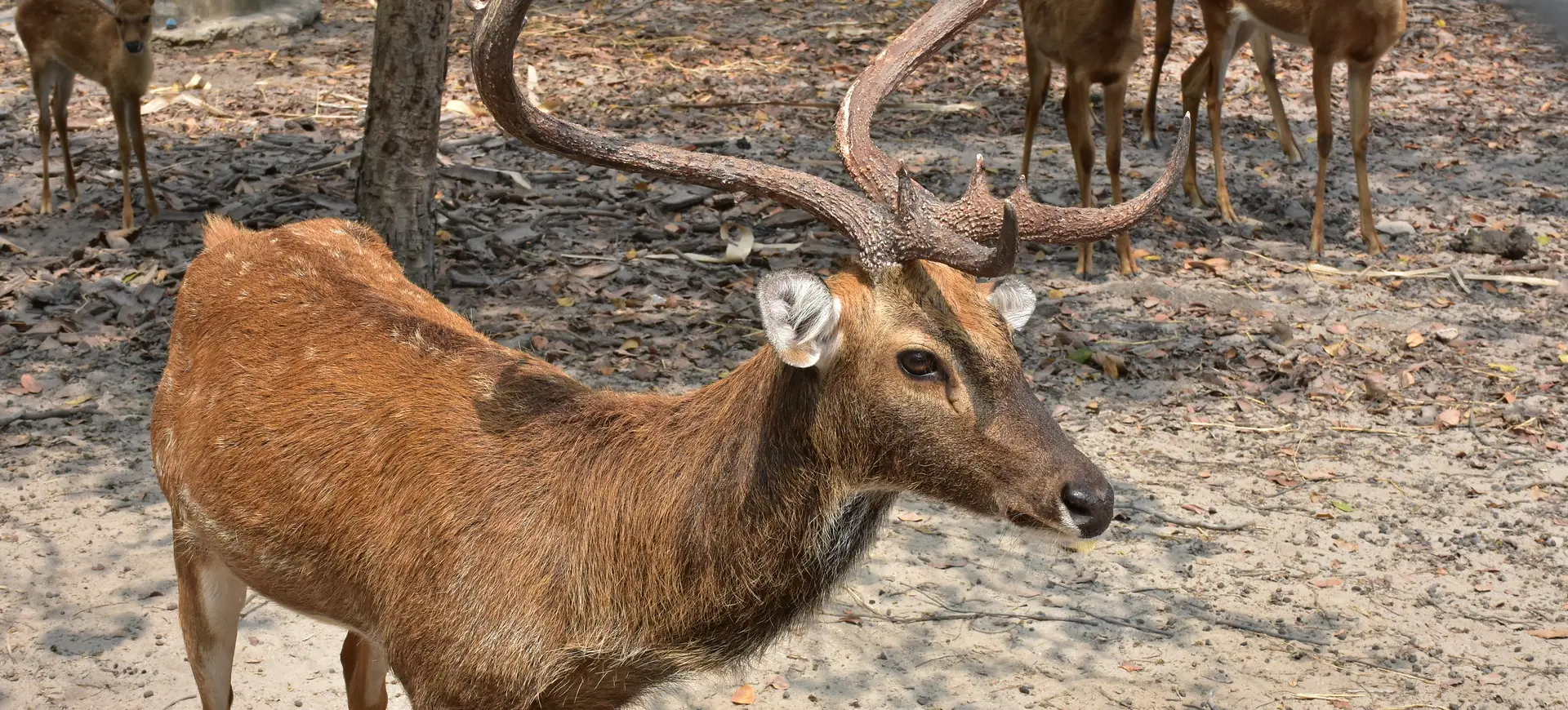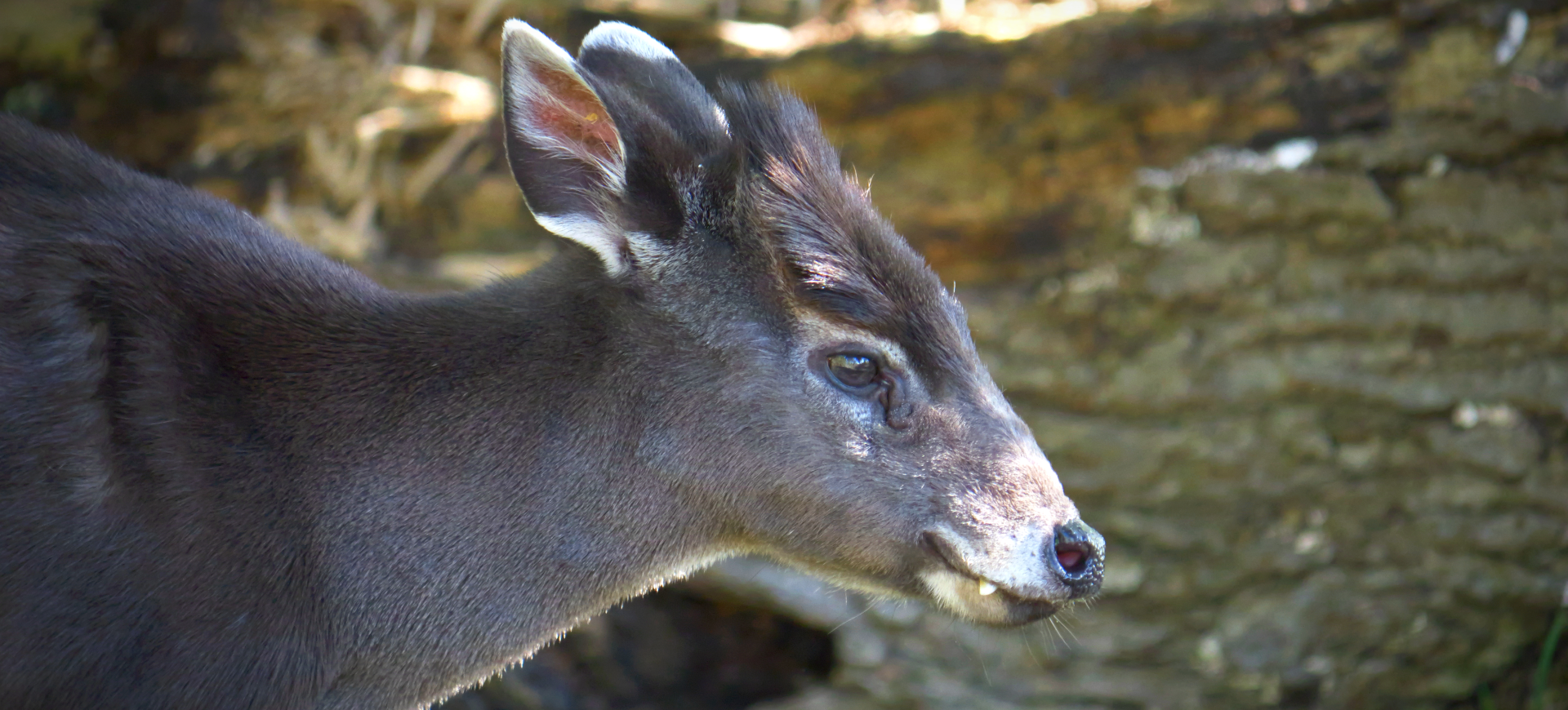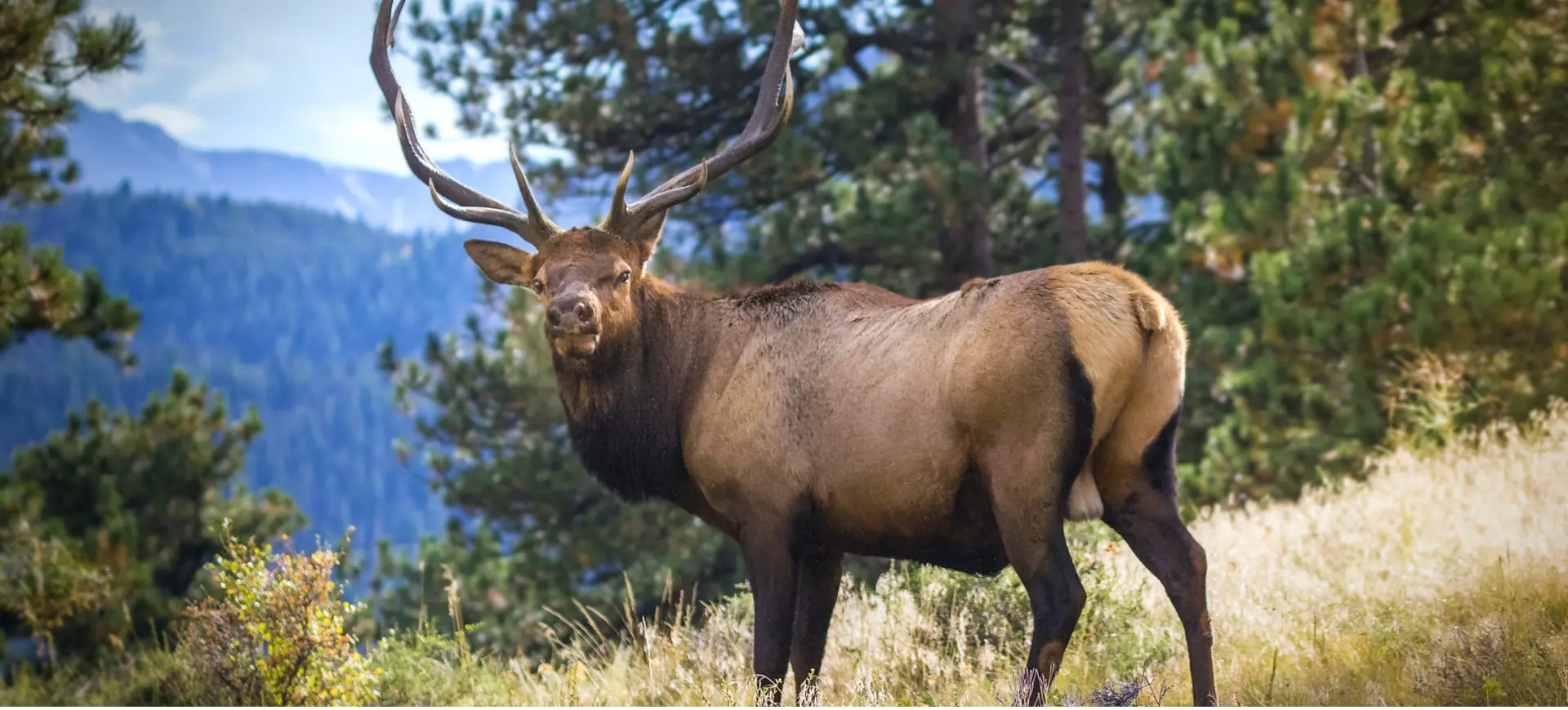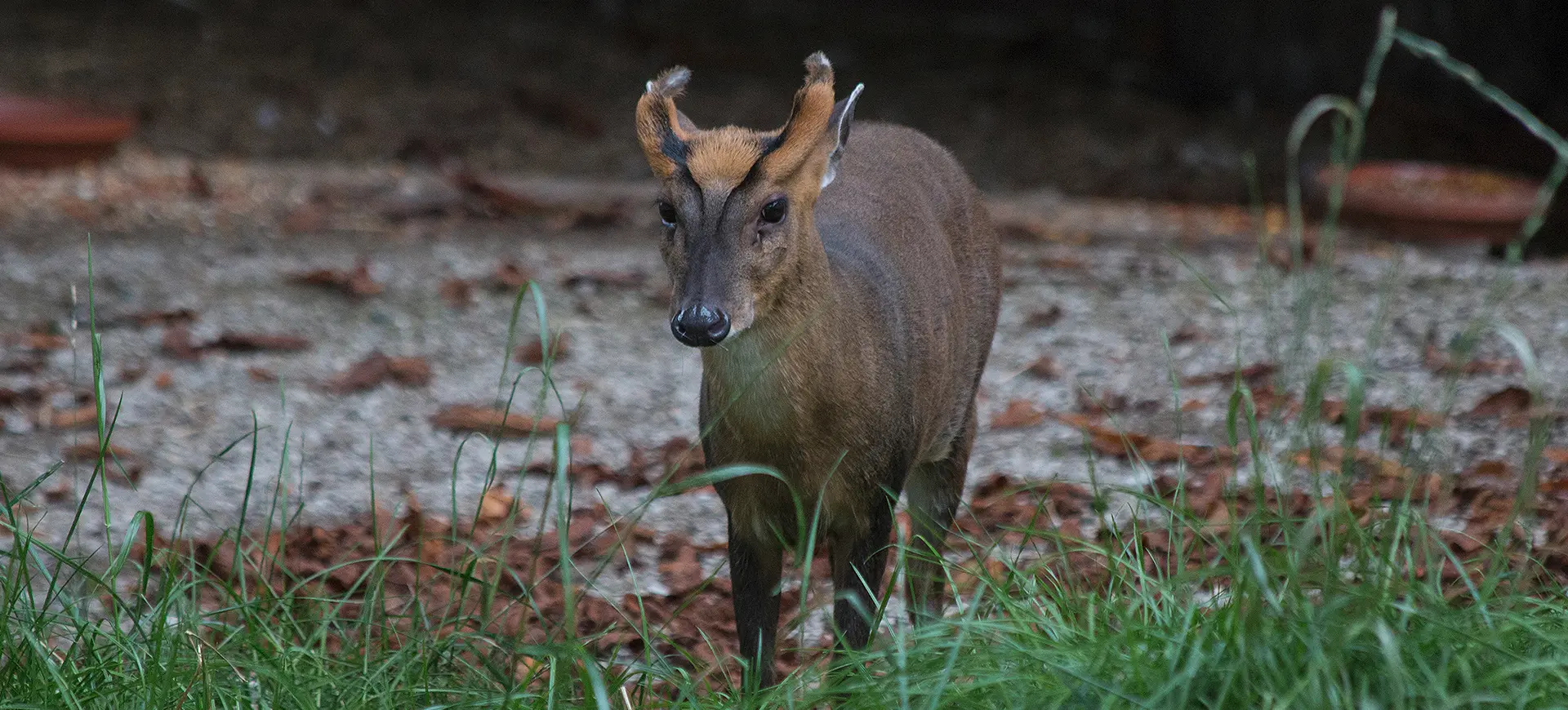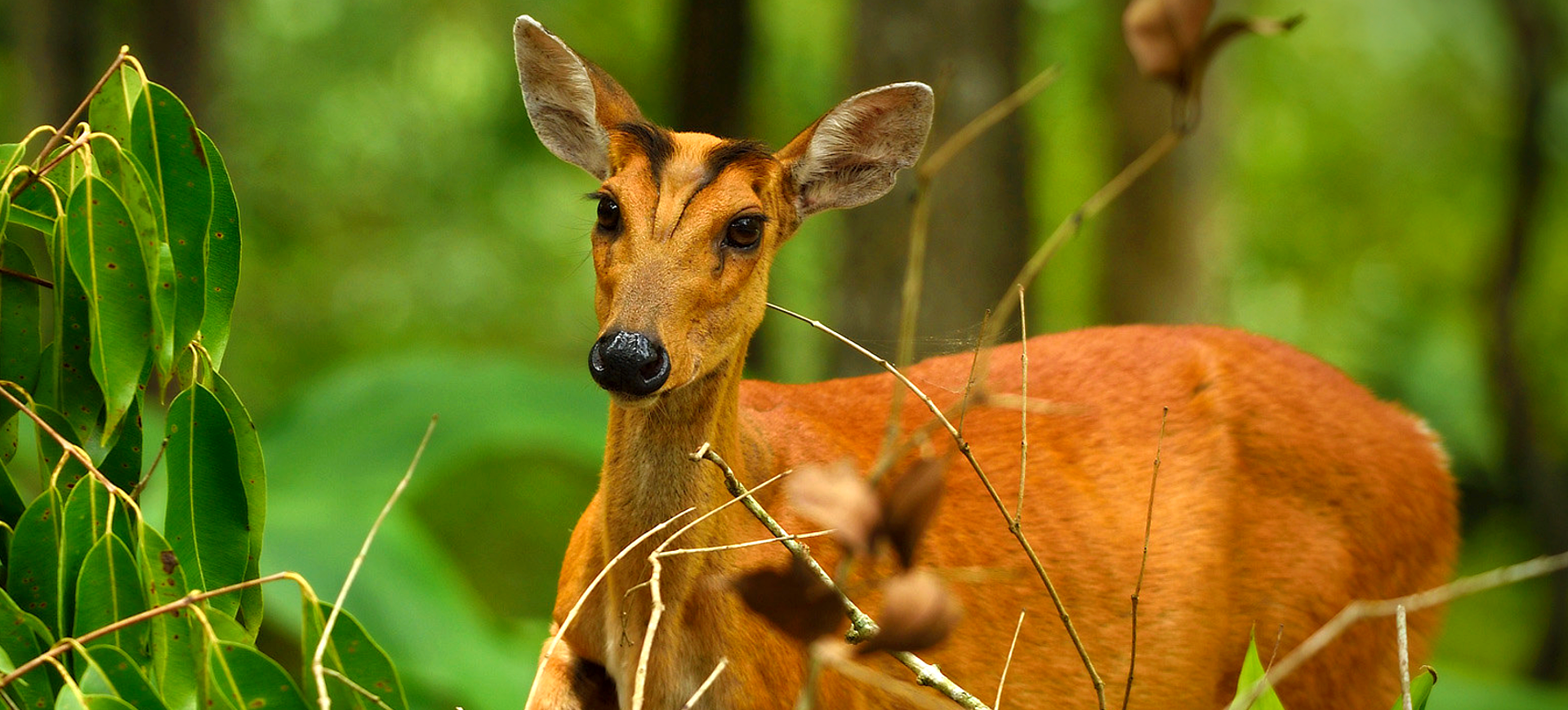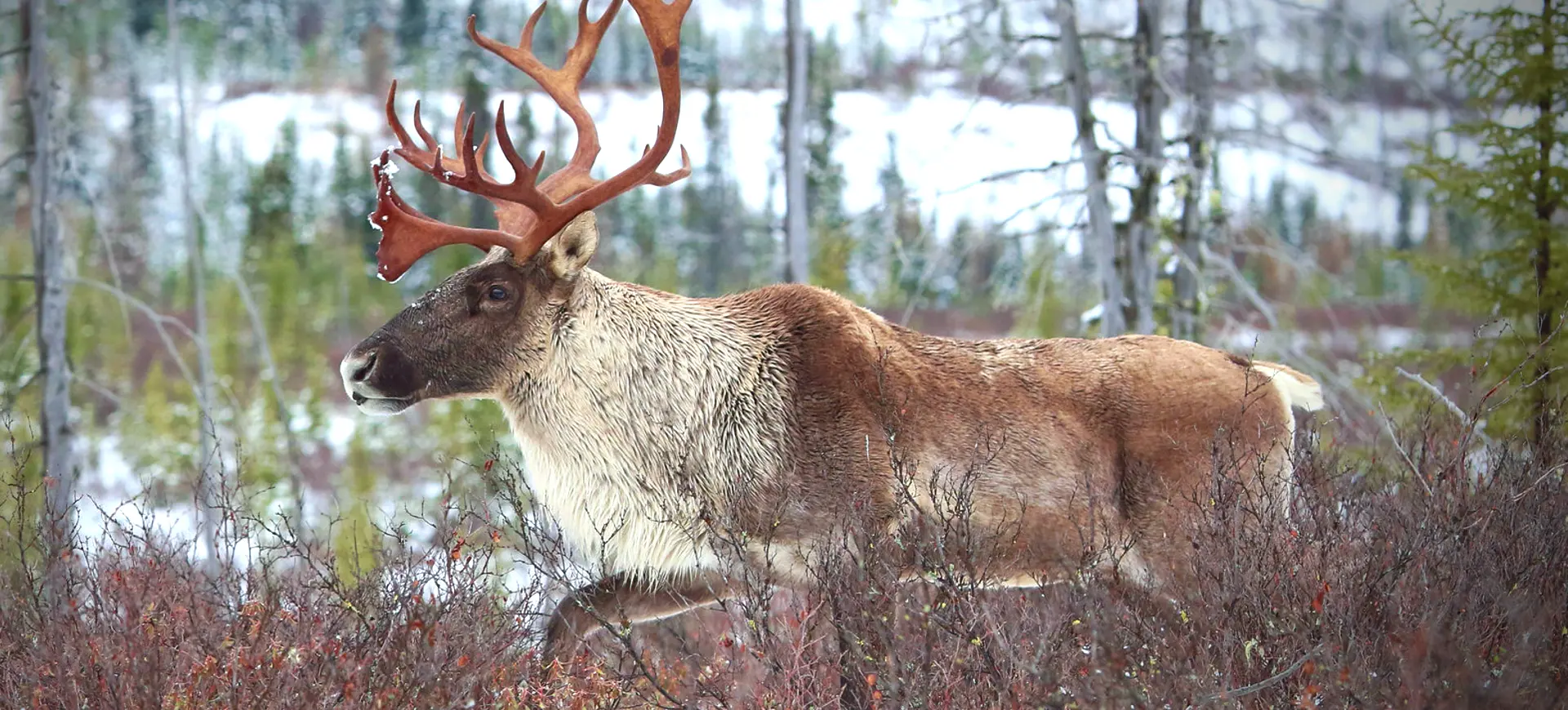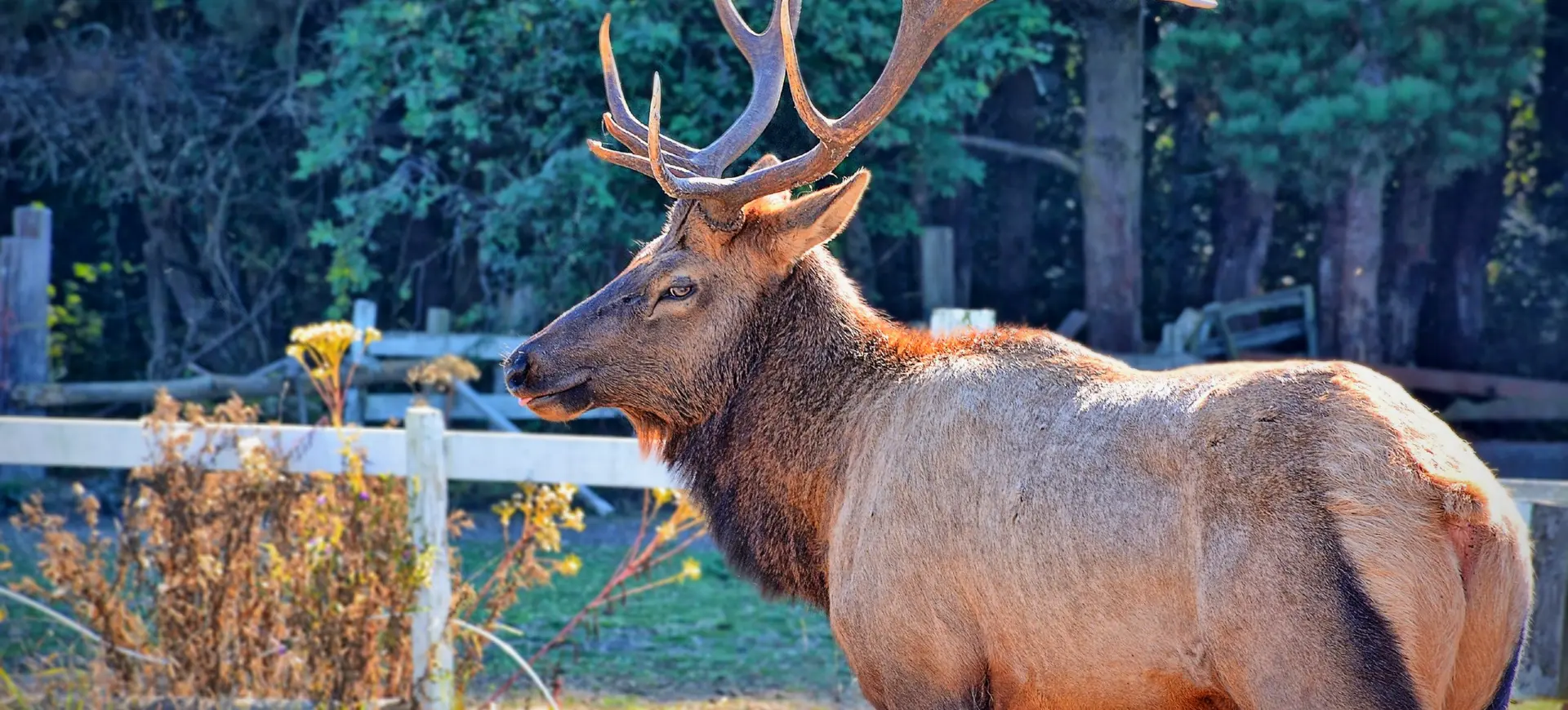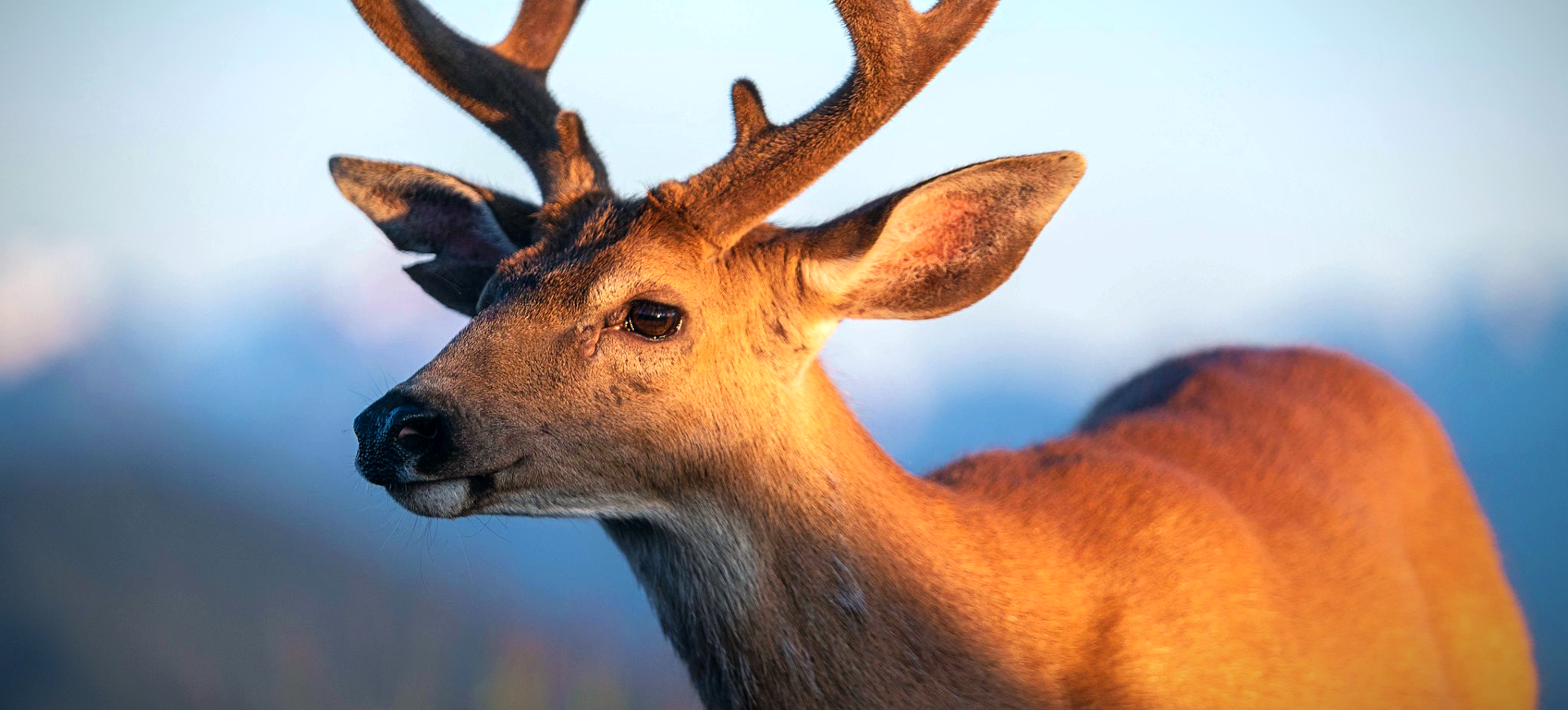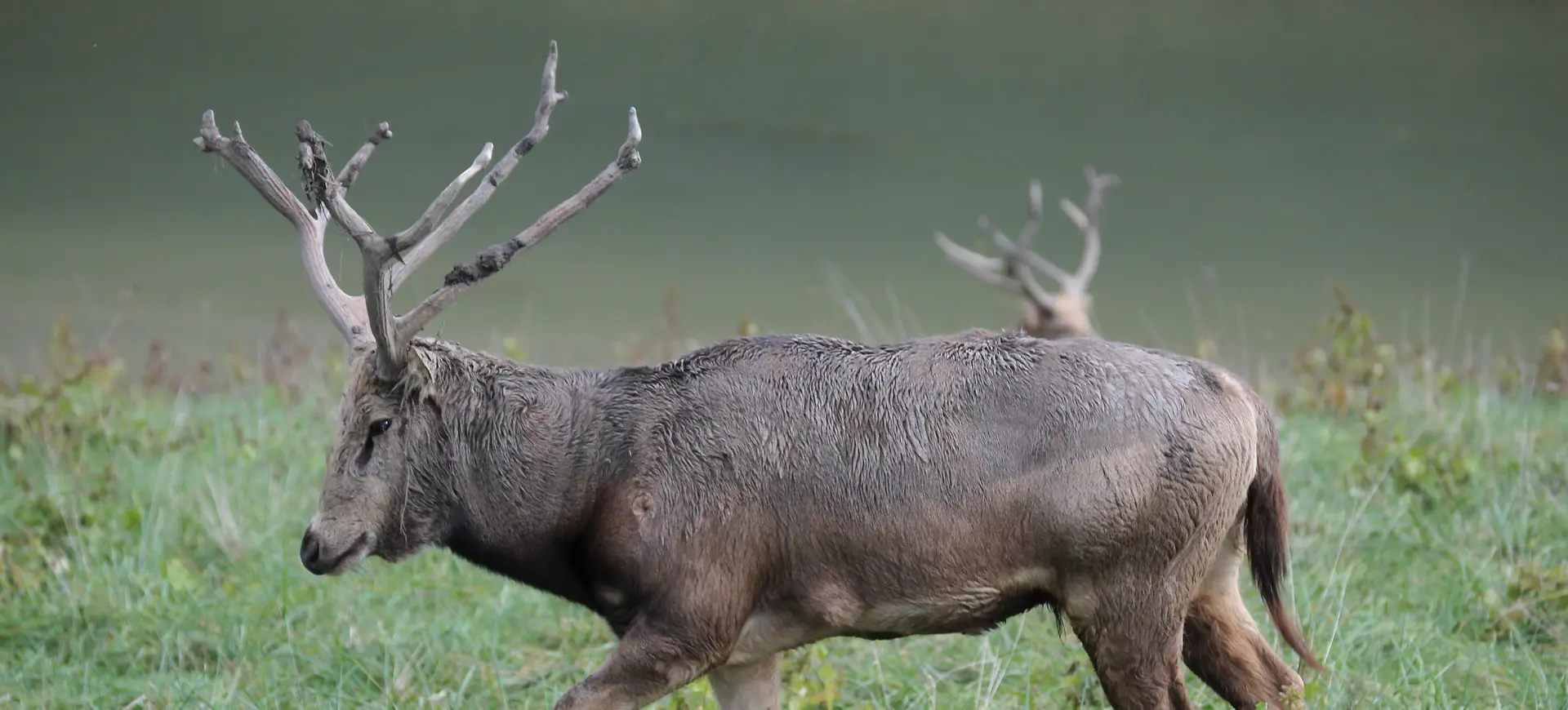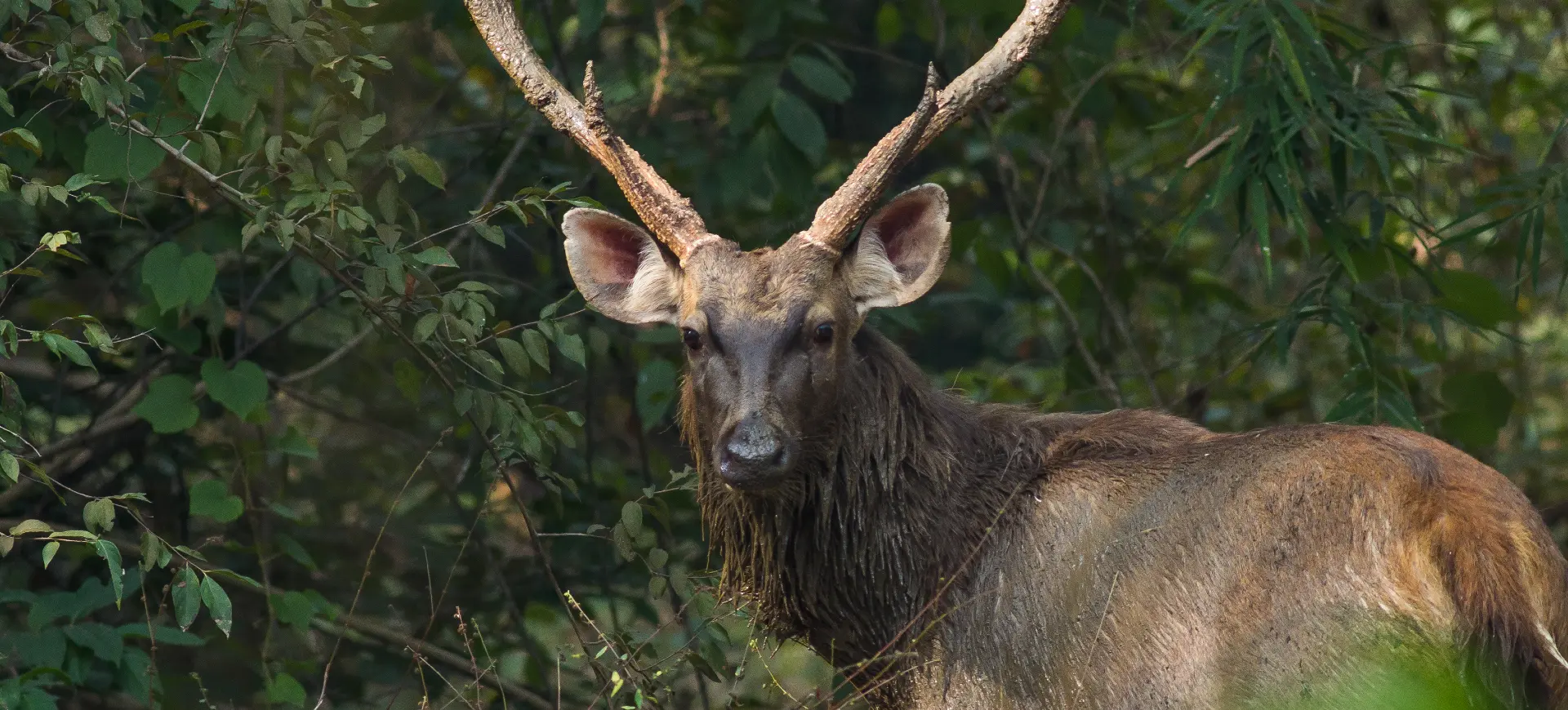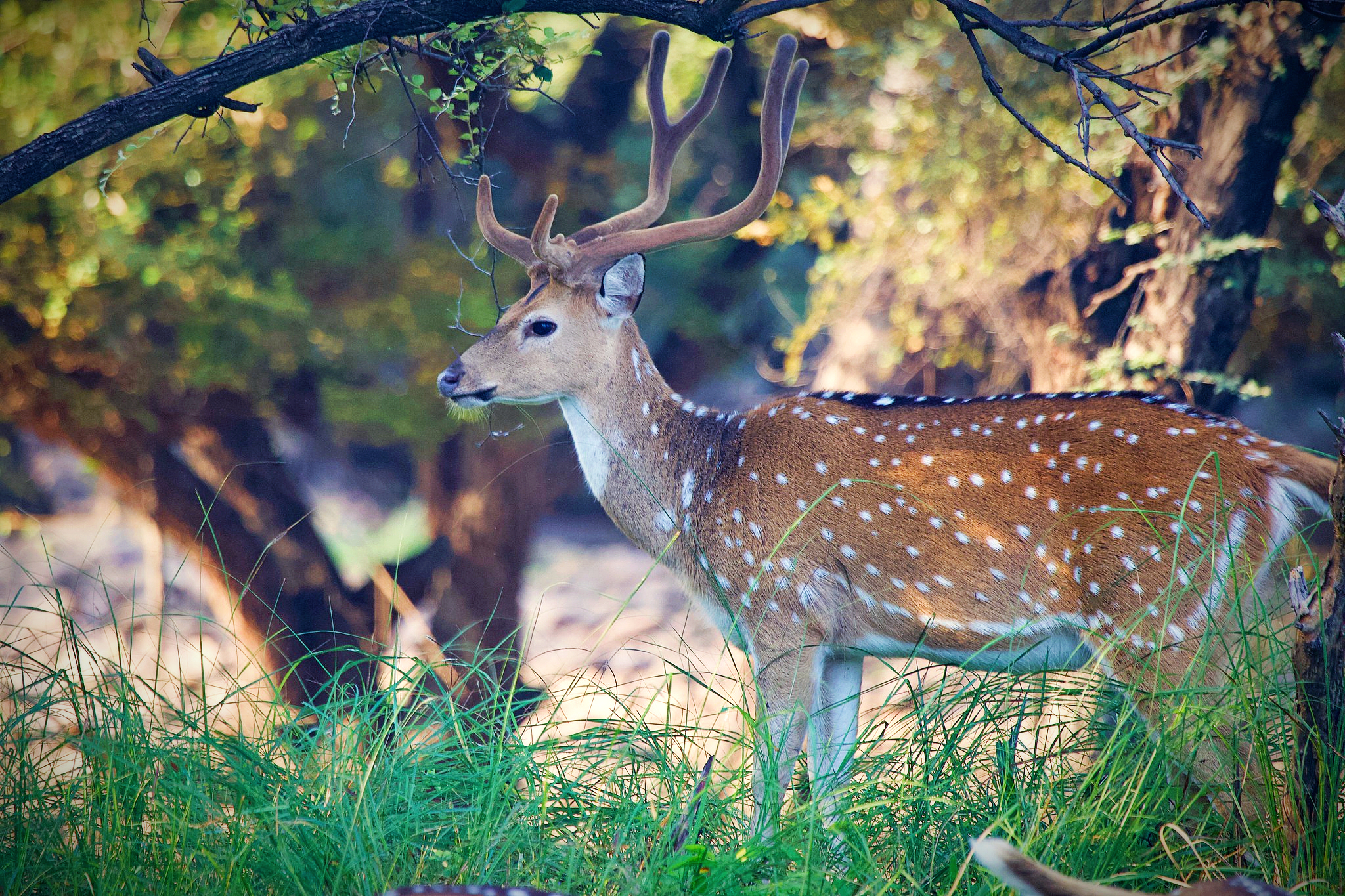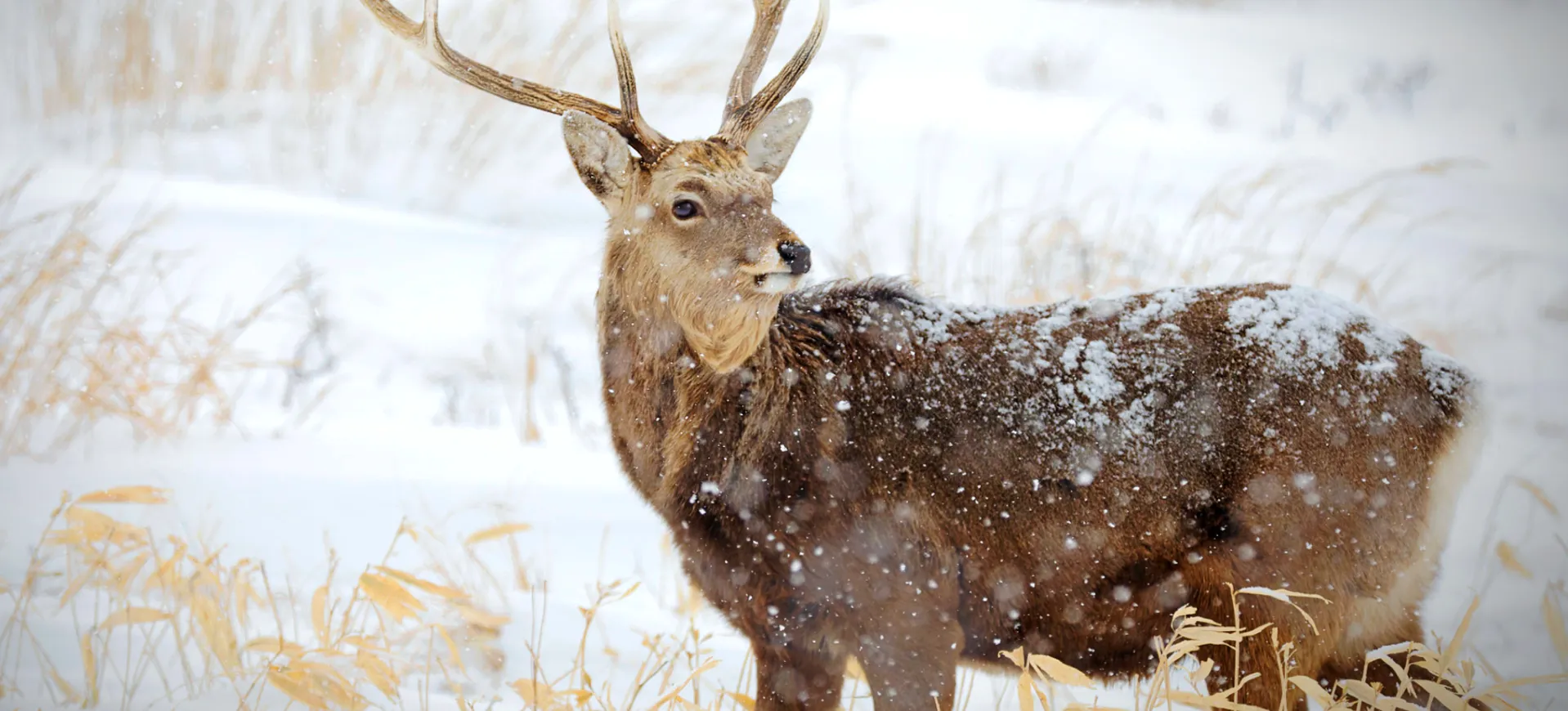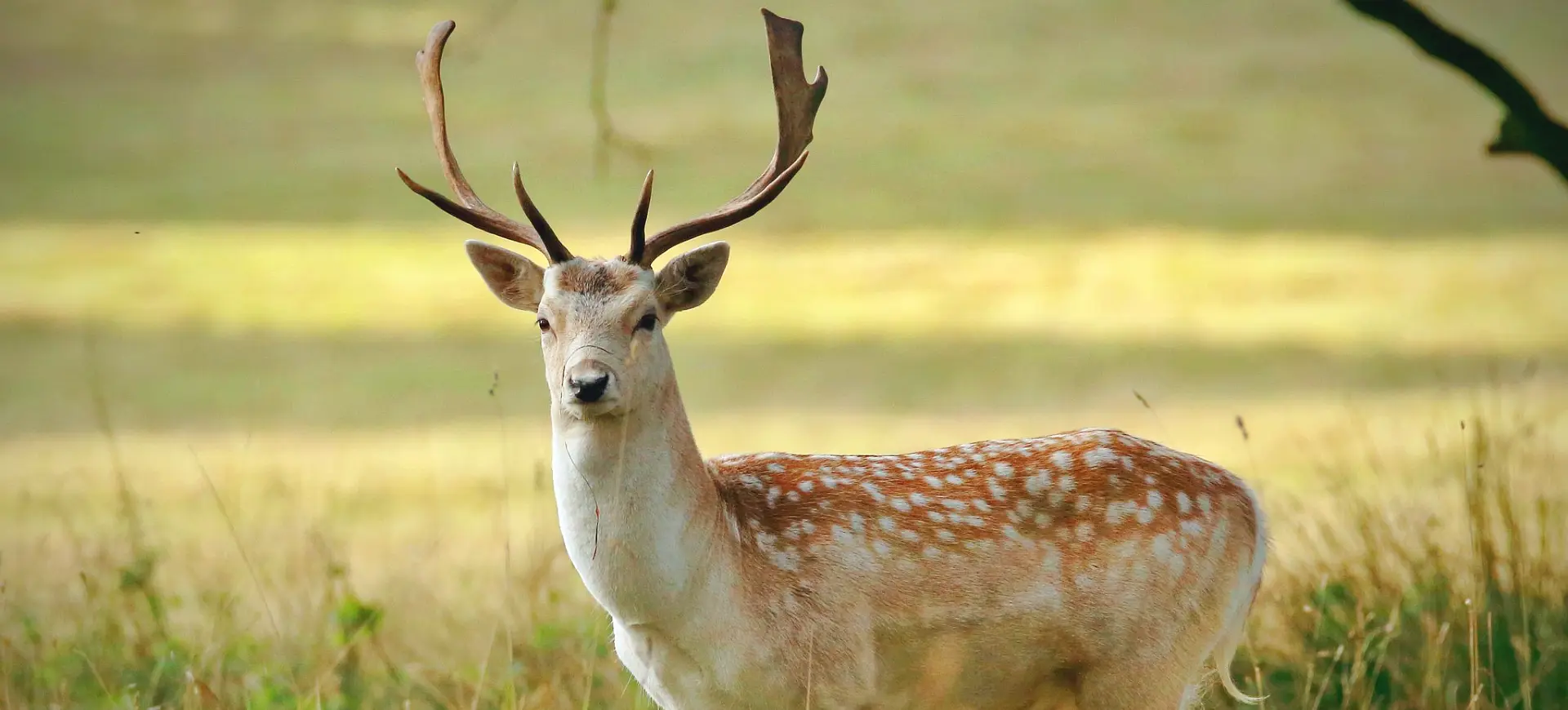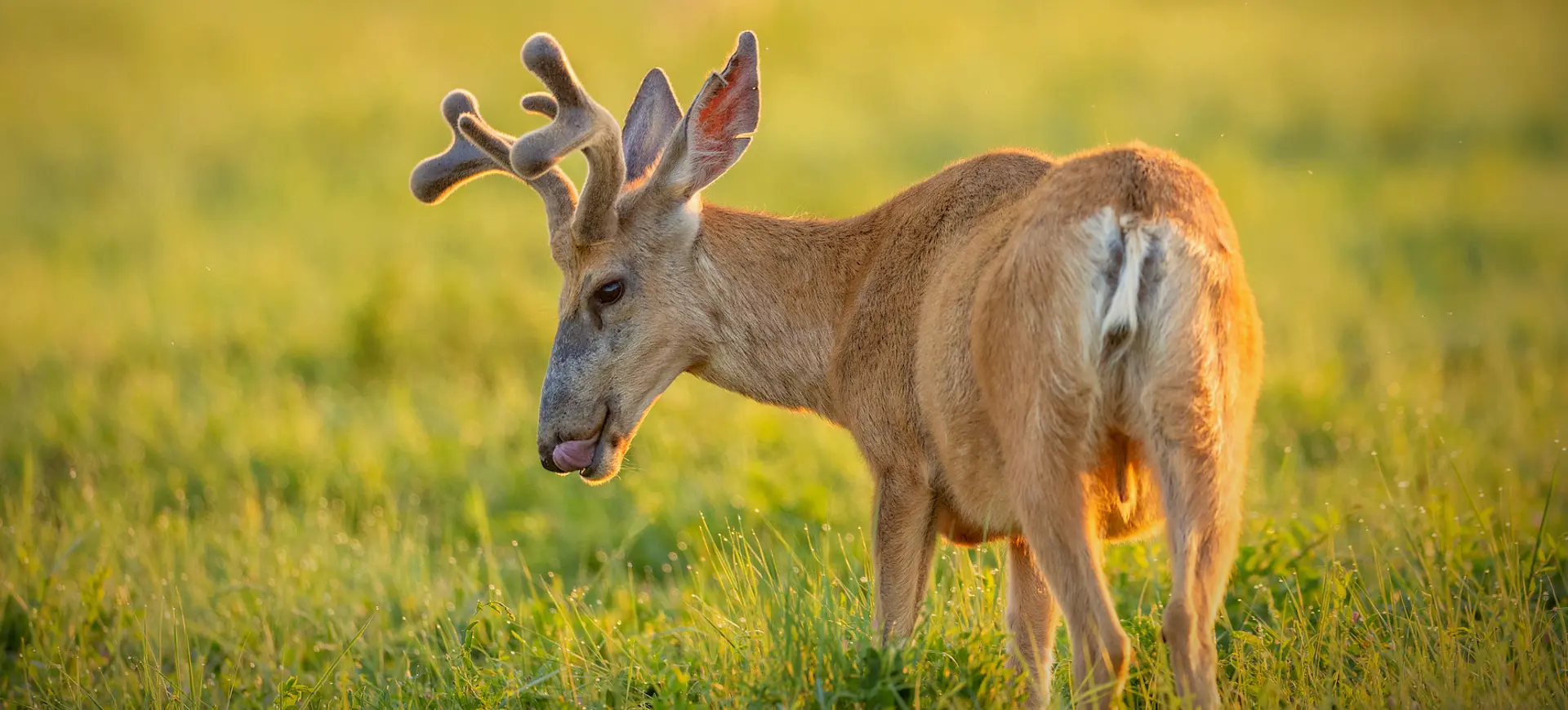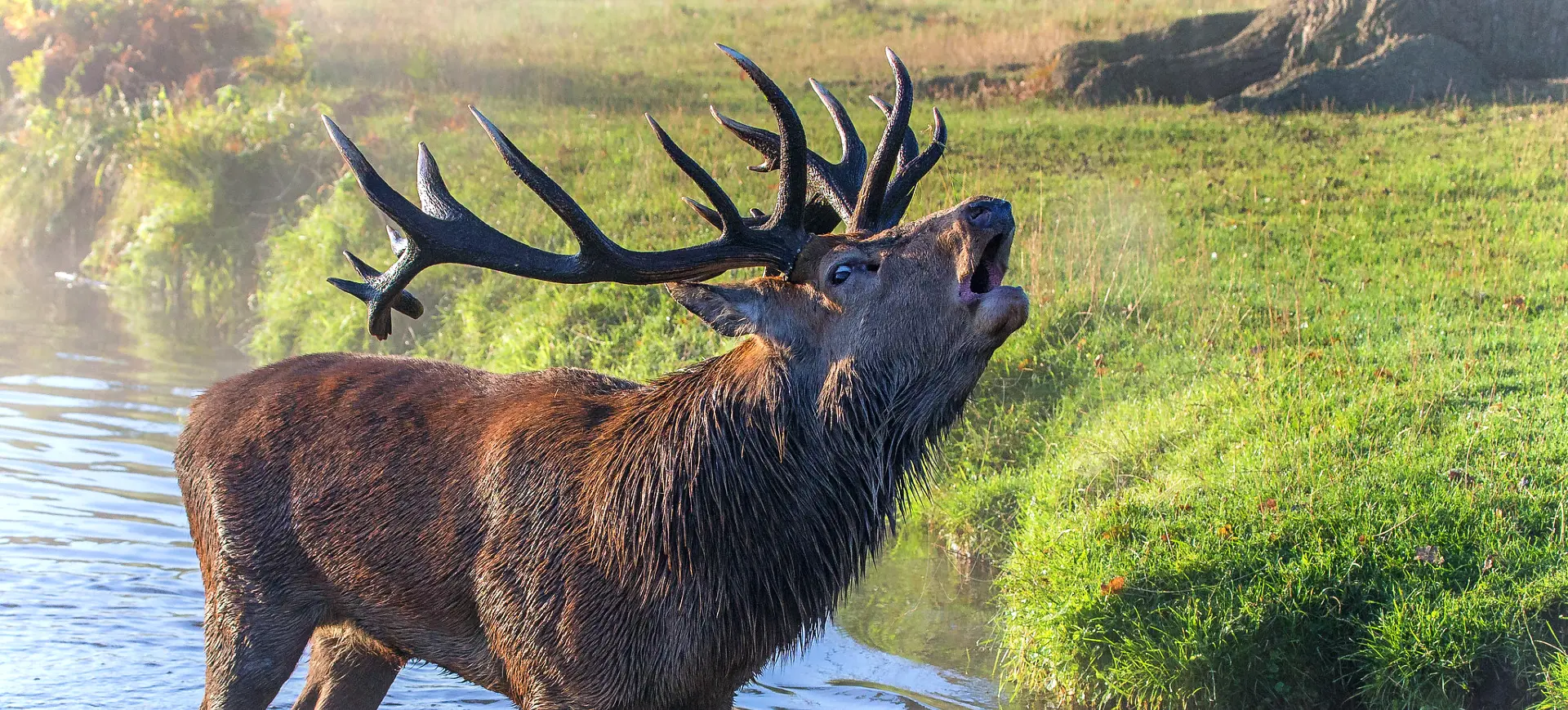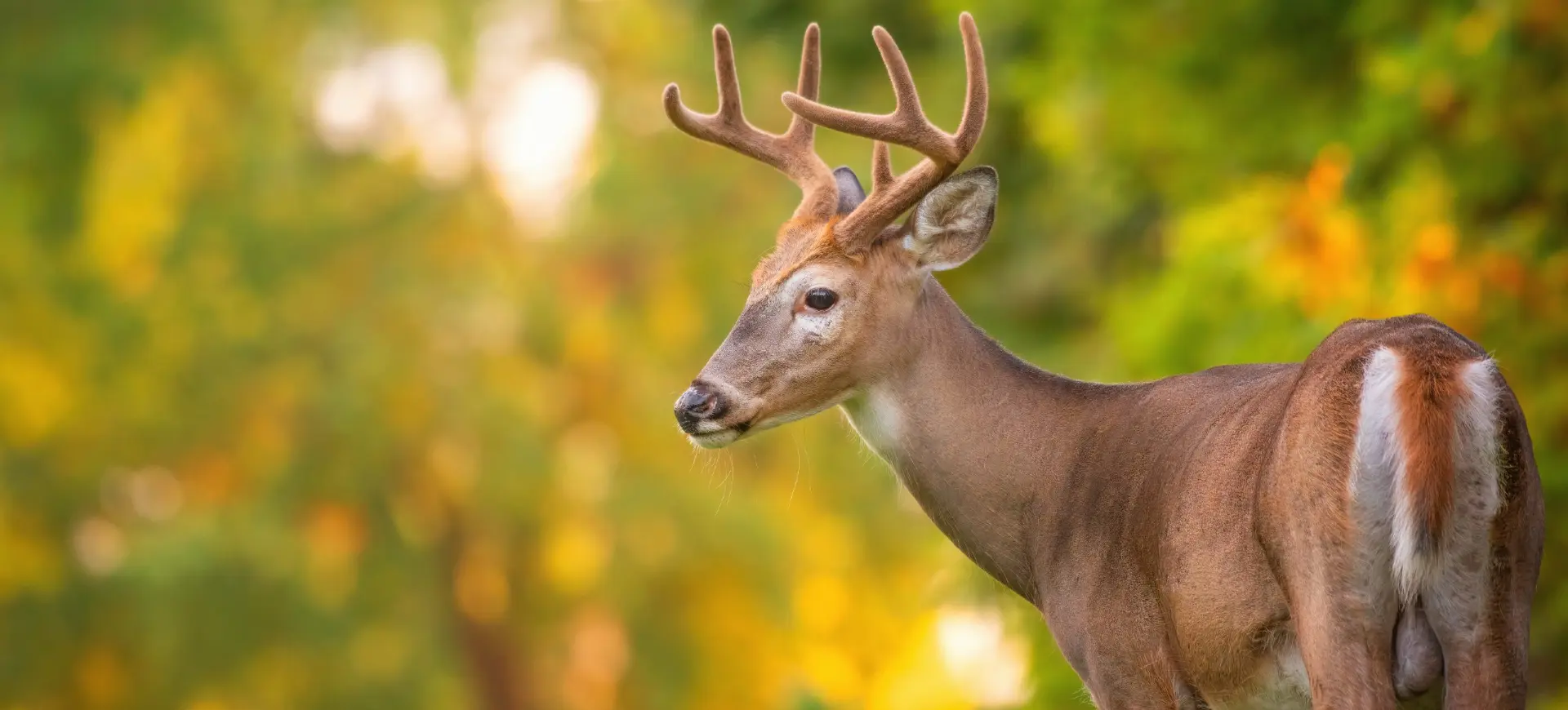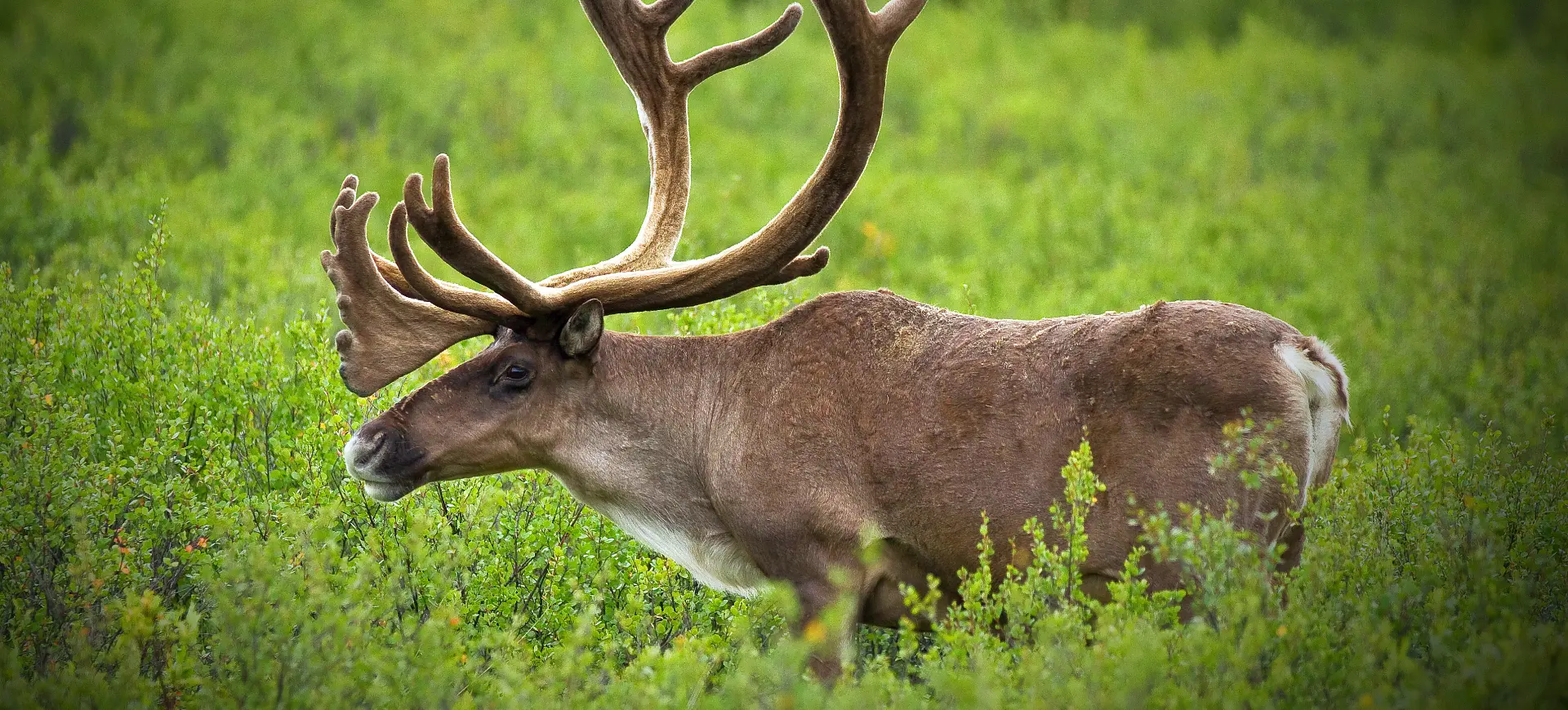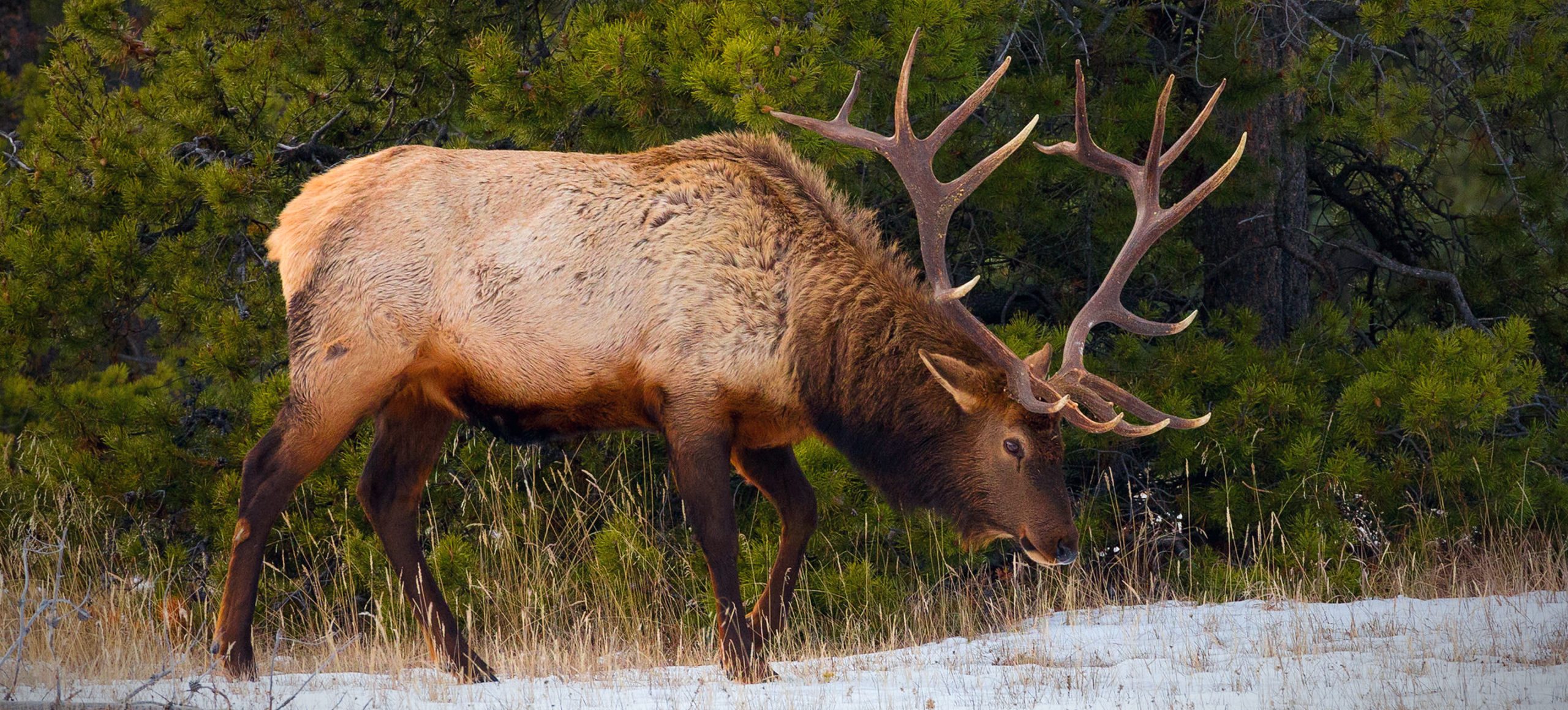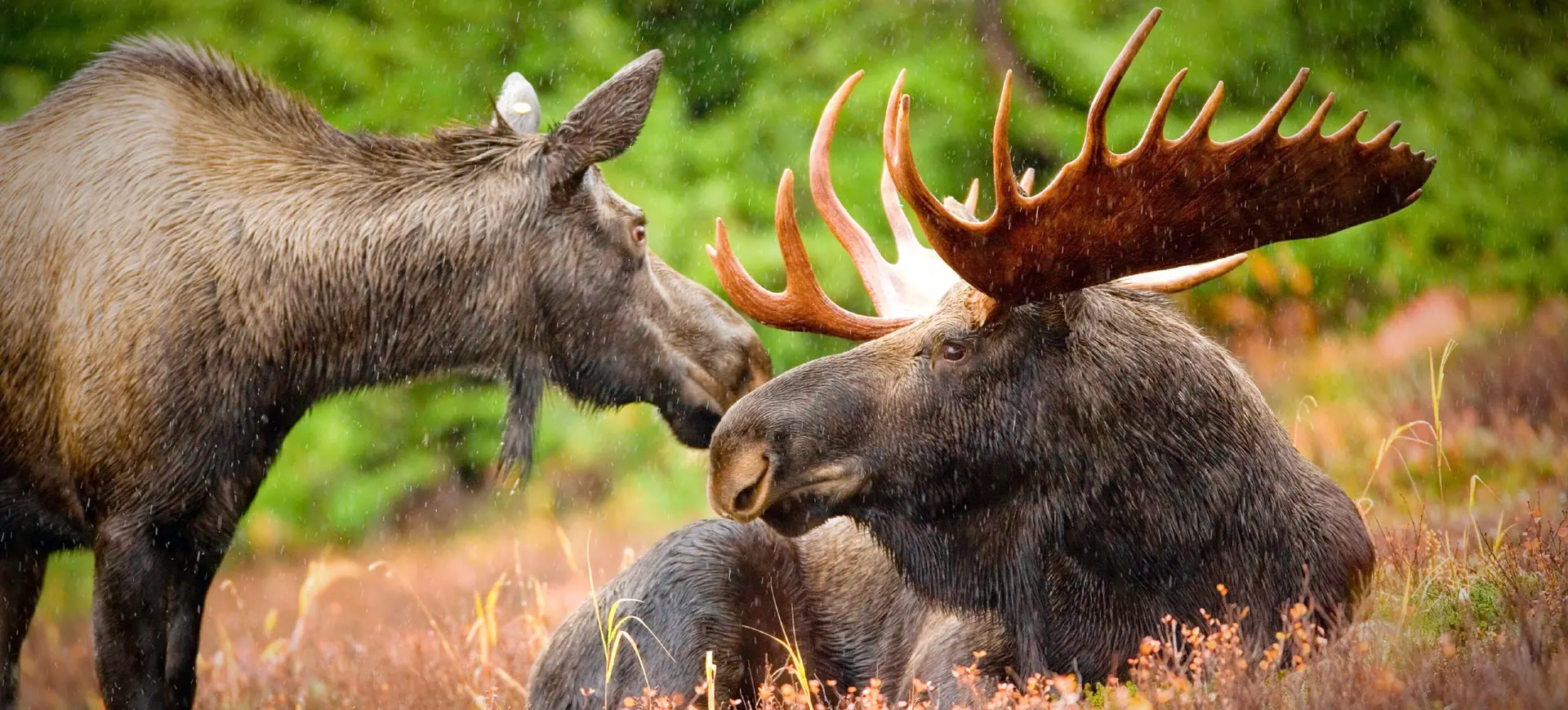Overview
The Eastern Moose (Alces alces americanus) is a subspecies of moose found primarily in the northeastern regions of North America, including Canada and the United States. This large mammal is distinguished by its impressive size, with males (bulls) significantly larger than females (cows). The Eastern Moose has a broad, overhanging snout and a distinctive dewlap, also known as a bell, hanging from its neck. Its fur is generally dark brown, which helps camouflage within its forested habitat, transitioning to lighter shades around the legs and bell.
Moose adapt well to their cold environments, with long legs facilitating movement through deep snow and swimming. Their diet primarily consists of leaves, bark, pine cones, and aquatic vegetation, which supports their large size and nutrient requirements. During the winter, they forage for food in areas where snow is not as deep, often along river beds or areas with exposed vegetation. The Eastern Moose’s antlers are another notable feature, with those of the male growing impressively large and shedding annually after the mating season.
Adaptations to aquatic environments are also key to the Eastern Moose’s biology. They are excellent swimmers, capable of closing their nostrils to dive underwater for aquatic plants. This adaptation aids in feeding and escaping predators by taking advantage of water bodies that are difficult for other animals to navigate. Their long legs, while useful in snow and water, also enable them to reach high branches for feeding, showcasing a remarkable versatility in habitat utilization.
Taxonomy
Kingdom
Phylum
Class
Order
Family
Genus
Species
Sub Species
Type
RANGE
Current distribution:
The Eastern Moose's current distribution covers a vast area of North America, primarily in the northeastern United States and eastern Canada, including New England, the Adirondacks, and parts of Ontario, Quebec, New Brunswick, and Nova Scotia. Their populations are densest in areas that provide ample forest cover and access to water bodies. Despite facing habitat fragmentation and changes due to human activities, the Eastern Moose has maintained stable populations in many parts of its range.
Conservation efforts and habitat management have been crucial in maintaining healthy populations of the Eastern Moose. In some regions, reintroduction programs and regulated hunting have been implemented to manage their numbers and ensure the sustainability of their populations. These efforts are vital in preserving the ecological balance and biodiversity of the regions where the Eastern Moose plays a key role.
Physical Description:
The Eastern Moose possesses a large, muscular build with a distinctive humped shoulder that contributes to its imposing stature. Adults can have a shoulder height ranging from 5 to 6.5 feet, making them the tallest mammals in their habitats. The males are renowned for their massive antlers, which can span up to 6 feet from tip to tip and are used in displays of dominance and during mating battles. Their fur is a dense, dark brown coat that provides insulation against the cold, with lighter patches around the haunches and underbelly.
Physical characteristics vary between males and females, with males bearing larger antlers and generally being heavier. Their long legs aid in navigating through deep snow and wading through water in search of aquatic plants. The Eastern Moose’s large ears can rotate to catch sounds from various directions, and their keen sense of smell helps them detect predators and locate food sources. Despite their size, moose can run up to 35 mph (56 km/h) for short distances, showcasing an impressive combination of power and speed.

Lifespan: Wild: ~20 Years || Captivity: ~25 Years

Weight: Male: 1000-1400 lbs (454-635 kg) || Female: 800-1300 lbs (363-590 kg)

Length: Male: 96-120 in (244-305 cm) || Female: 90-114 in (229-290 cm)

Height: Male: 66-83 in (167-210 cm) || Female: 60-71 in (152-180 cm)

Top Speed: 35 mph (56 km/h)
Characteristic:
Native Habitat:
The Eastern Moose inhabits dense boreal and mixed deciduous forests that provide both cover and a variety of vegetation for food. Their habitat ranges include areas with access to lakes, rivers, and wetlands, essential for their diet of aquatic plants during the summer months. These environments also offer protection from predators and are critical for the moose’s thermoregulation, allowing them to cool down during warmer periods.
The adaptability of the Eastern Moose to various habitat types is remarkable, from lowland areas to mountainous regions. They prefer habitats that offer a combination of dense forest cover for shelter and open water bodies for feeding. Seasonal migrations are common, with moose moving to higher elevations in the summer to escape insects and down to lower, dense forest areas in the winter for protection against the cold. This migratory behavior underscores their ability to utilize a range of habitats within their geographical distribution.
Climate Zones:
Biomes:
Biogeographical Realms:
Continents:
Countries:
Diet:
Diet & Feeding Habits:
The Eastern Moose is an herbivore that eats terrestrial and aquatic vegetation. It consumes various plants, including leaves, twigs, bark, and shoots of deciduous and coniferous trees. During the summer, aquatic plants become a significant part of their diet, providing essential minerals and hydration. This shift to aquatic vegetation reflects the moose’s adaptability and the seasonal availability of resources.
In the winter, the Eastern Moose’s diet shifts primarily to bark and twigs because other food sources are scarce. They are known to travel great distances searching for food, which can lead to conflicts with humans when they browse on plantations or ornamental trees. The moose employs a unique feeding strategy called “horning,” which uses its antlers to strip off large branches or knock down small trees, making the leaves more accessible. This behavior highlights their role as keystone species in shaping their ecosystems’ vegetation and habitat structure.
Mating Behavior:
Mating Description:
The Eastern moose’s mating season, known as the rut, occurs in the fall, around September and October. During this time, males become more aggressive and search for females by following scent trails. They engage in spectacular displays, including antler wrestling and loud vocalizations, to attract females and assert dominance over rivals. Females, in turn, will select mates based on the males’ size, antler display, and behaviors.
After mating, females undergo a gestation period of approximately 8 months, resulting in the birth of one or two calves in the spring. These calves are born with a reddish-brown fur coat, which provides camouflage in their forested habitats. They are precocial and can stand and follow their mothers within a few days of birth, a critical adaptation for survival in predator-rich environments. The strong bond between the mother and her calves lasts for a year, after which the calves are weaned and become independent.
Reproduction Season:
Birth Type:
Pregnancy Duration:
Female Name:
Male Name:
Baby Name:
Social Structure Description:
The Eastern Moose is generally solitary, with individuals coming together only during the mating season or when a cow raises her calves. Outside of the breeding season, moose are known to have a large home range, which they roam independently. This solitary nature helps reduce competition for food, which is crucial given their large size and dietary needs.
Social interactions among moose are primarily observed during the rut when bulls compete for access to cows. Cows with calves exhibit strong maternal instincts, protecting their young from predators and threats. The social structure of moose populations emphasizes the importance of individual territories and the selective nature of mating interactions, which play a crucial role in their life cycle and survival strategies.
Groups:
Conservation Status:
Population Trend:
The Eastern Moose’s populations are currently stable in many parts of its range, thanks to successful conservation efforts and habitat management. However, in some areas, populations have experienced fluctuations due to factors such as habitat fragmentation, road accidents, and hunting. These challenges underscore the importance of ongoing monitoring and conservation strategies to ensure the species’ long-term survival.
In regions where the Eastern Moose has shown population declines, efforts have been intensified to address issues like habitat loss and conflicts with human activities. Conservation measures include creating wildlife corridors to connect fragmented habitats, regulating hunting to ensure sustainable population levels, and implementing road-crossing structures to reduce vehicle collisions. These efforts are critical in maintaining healthy populations and ensuring the ecological role of the Eastern Moose in its native habitats.
Population Threats:
The primary threats to the Eastern Moose include habitat loss due to logging, urbanization, and climate change. These factors contribute to habitat fragmentation, making it difficult for moose to access traditional feeding and breeding grounds. Climate change, in particular, affects the distribution and availability of food sources and increases the prevalence of parasites and diseases, such as winter ticks, which can severely impact moose health and mortality rates.
Predation by wolves and bears also poses a significant threat to moose populations, particularly affecting calves and weaker individuals. Human activities, including road construction and increased traffic, lead to higher mortality rates due to vehicle collisions. While regulated, hunting can also impact populations if not carefully managed, highlighting the need for continued conservation efforts to mitigate these threats.
Conservation Efforts:
Conservation efforts for the Eastern Moose include habitat protection and restoration, regulatory measures to control hunting, and research to better understand the species’ ecology and threats. Protected areas and national parks are crucial in providing moose and other wildlife safe habitats. Collaborative efforts between government agencies, conservation organizations, and local communities aim to balance the needs of moose populations with those of human populations.
Research and monitoring programs are essential for tracking moose population trends, health, and habitat use. These programs help identify critical habitats, migration patterns, and the impacts of climate change on the species. Education and outreach initiatives also raise awareness about the importance of moose conservation and the role individuals can play in protecting this iconic species.
Additional Resources:
Fun Facts
- Moose can swim up to 6 mph and dive more than 18 feet underwater in search of aquatic plants.
- Despite their size, moose are capable of jumping fences over 6 feet tall.
- Moose have a highly developed sense of smell, which they use to detect predators and find food under deep snow.
- The skin under a moose’s antlers, known as “velvet,” supplies blood to the growing bone and sheds once the antlers are fully grown.
- Moose antlers are the fastest-growing animal tissue, capable of growing an inch per day.
- In the winter, moose can survive temperatures as low as -50°F by utilizing their thick fur and fat reserves.
- A moose’s diet can require consuming up to 70 pounds of food daily during the summer.
- The Eastern Moose is the largest species of deer in North America.
- Moose are nearsighted, which means they have difficulty seeing objects far away.
- The name “moose” comes from the Algonquin word “moose,” meaning “twig eater.”

